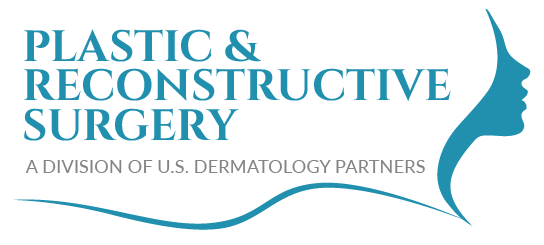Facial Paralysis Reanimation Treatment
There are a variety of reasons a patient may experience facial paralysis. While facial paralysis can impact speech, chewing ability, self-confidence, and overall health and well-being, there are effective treatment options available, including surgical and non-surgical reanimation procedures. You can keep reading to learn more about reanimation for facial paralysis. If you’re interested in scheduling a consultation with a skilled plastic surgeon, don’t hesitate to reach out to the knowledgeable team at Plastic & Reconstructive Surgery – a division of U.S. Dermatology Partners.
What Is Facial Paralysis Reanimation?
Surgical and non-surgical reanimation treatments are designed to improve appearance, function, and dynamic facial expressions following facial paralysis.
Surgical reanimation may be recommended following facial paralysis that occurs because of:
- Bell’s Palsy
- Congenital facial paralysis
- Facial trauma
- Brain tumor
- Nerve damage
- Ramsey hunt syndrome – facial paralysis related to shingles
Before recommending a surgical or non-surgical reanimation treatment for facial paralysis, your surgeon will work with you to determine your hopes and goals in possible treatments.
Some of the top recommended non-surgical reanimation solutions for facial paralysis include:
- Botox – may be recommended to address nerve damage related to Bell’s palsy or unwanted movements, synkinesis, that may happen as a result of Bell’s palsy.
- Dermal Fillers – may be used to restore lost facial volume related to facial paralysis.
- Physical Therapy – in many cases, performing exercises under the direction of a physical therapist can help restore function and improve appearance.
If deemed necessary to achieve the desired improvement, you may want to schedule a consultation to explore surgical reanimation options, including:
- Selective Myectomy – often recommended to address concerns following Bell’s palsy, including synkinesis, or involuntary movement. This procedure divides the muscles to restore balance and symmetry to muscle movements.
- Selective Neurolysis – this is recommended for those with facial paralysis accompanied by synkinesis. It can help to prevent misfiring nerves that cause unwanted muscle movements.
- Static Suspension – also called a static sling, this surgical treatment involves using a skin tissue called fascia lata taken from the thigh to lift the mouth and cheek when they are drooping.
- Temporalis Tendon Transfer – this surgical procedure involves making an incision in the skin’s natural crease between the lip and cheek as well as an incision inside the mouth to attach the bone and tendon beneath to the corner of the mouth, pulling it up into a more natural and symmetrical position. This procedure is unique in that it allows for dynamic movement and restoration of a smile.
- Blepharoplasty – eyelid surgery used to reconstruct the upper and/or lower eyelids. These treatments may tighten skin, repair muscles, and remove unwanted fatty deposits.
- Platinum Eyelid Weights – this surgical treatment implants small platinum weights into one or both eyelids to restore the ability of the eyes to fully close following facial paralysis. This prevents eye dryness, inflammation, and possible blindness in the long term.
- Brow Lift – if facial paralysis leads to a drooping brow, a brow lift procedure may be recommended to reverse the effects. This surgical procedure is completed by making incisions in the skin to pull back the tendons and muscles below and reposition the brow.
- Facelift – like a brow lift, facelifts involve making strategic incisions and pulling back facial musculature and tendons to create a tight, smooth appearance.
- Cranial Nerve Transfer – this advanced surgical procedure involves grafting a non-functional nerve to one that is working properly to restore proper function. The nerve is typically taken from another part of the body and affixed to the non-functional nerve.
Benefits of Facial Paralysis Treatment
The main benefit is clear – the restoration of facial expression and movement.
Other benefits include:
- More confidence
- Greater range of facial motion
- Increased comfort during facial movement
- Address ancillary concerns like drooping skin
- Improved speech clarity
Recovery After Facial Reanimation
Your recovery plan will vary depending on the specific procedure you receive. A consultation with our surgeons to discuss proper care after the procedure and to promote healing will be important. You should schedule follow-up visits with us to ensure you make a full recovery.
Risks Associated with Facial Paralysis Reanimation
Risks associated with facial reanimation surgery for paralysis are similar to risks associated with other surgical procedures. Immediately following treatment, you may experience swelling, bruising, bleeding, scarring, infection, and general discomfort as the surgical sites heal. Because of the variety of procedures offered for facial paralysis, there will be a more in-depth discussion at the time of your consultation.
FIND A PHYSICIAN NEAR YOU
PHYSICIANS THAT OFFER FACIAL REANIMATION PROCEDURE


